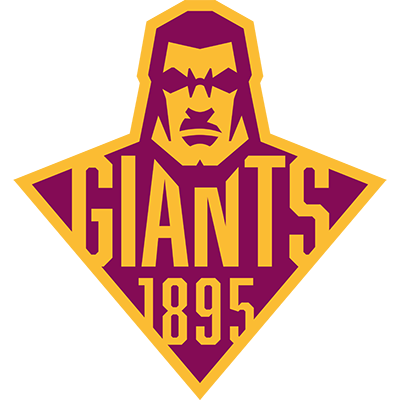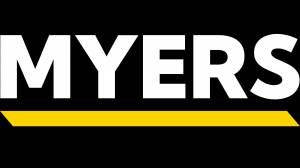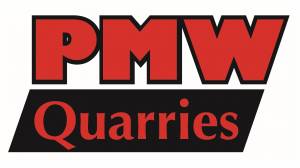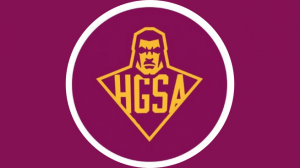23 Aug 2019
THE CHALKBOARD: WHAT DO POSITIONS MEAN?
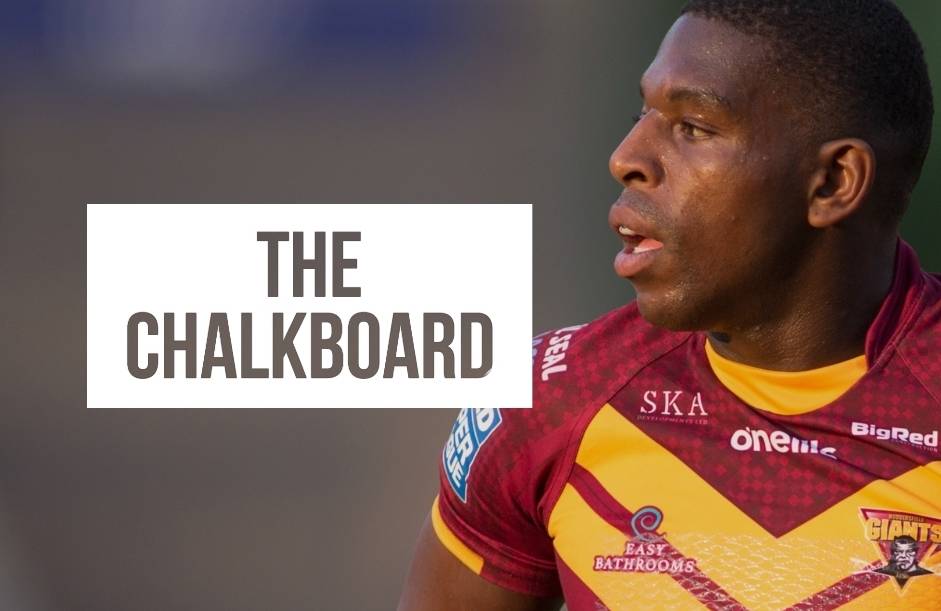
For this week's Chalkboard, we look at just what a 'full-back', a 'centre' and a 'hooker' actually do in 2019.
Often
we hear the phrase “modern rugby”, a term use by every media outlet to describe
the changes we see the differences from ‘the good old days’ to now, and despite
the game still being about 13 players trying to outscore the opposing 13 by
scoring tries and goals, the game has changed significantly. Once it was a big
games for big participants, front line props cascading over each other to win
advantage for their side to get themselves the win. Penalties less frequent, safety
less evaluated and the showboaters, utility’s and the all-rounders barely seen.
Modern
rugby remains to have 13 players, and although they are known by the same
positional names, their roles have changed, here we are going to break-down
some of the big and small changes, and what is expected of each player when
they pull on their jersey, whether it’s number 1, number 4 or number 13.
Full-Back (1):
At
Huddersfield we’ve seen some interesting developments at 1, and it outlines the
lack of consistency throughout the league as to what a real full-back is these
days. McIntosh has held the shirt for most of the season but with the end nigh
and pressure on, the need for an extra influential figure going forward has
forced Simon Woolford’s hand, and Gaskell has been pushed to the role. In days
gone by, the defensive capabilities of Kris Radlinski and Paul Wellens were
admire and sought after.
Full-Back’s
like Jamie Shaul, Niall Evalds and our own McIntosh, in part, lacking to the
defensive standards set by the greats but they bring an attacking prowess
little can cope with, much like the attacking creativity of Jonathan Davies for
Great Britain and Widnes. I expect Lee Gaskell’s move to full-back a major
statement to the defensive units of our opponents rather than the defensive
stability of our own.
The Modern-day full-back however is well expected to be competent, if not fantastic, at both. An ability to read defensive plays, and make smart choices that benefit the team overall, and to get into the back of the attacking plays, usually at 3rd receiver, and create opportunities and again make key decisions to hold or bring in the players outside to put points on the board.
Wingers (2+5):
Jermaine
McGillvary, Ryan Hall, Jason Robinson.. The list goes on and on. A position of
real dominance throughout the Super League era, and in truth a position of very
little change.
Wingers
are expected go through a lot of work in the middle, something that did occur
but maybe wasn’t as frequent in the late 90s/early 00s. All you have to do is
look at the top metre makers in the comp and you’ll see how valuable McGillvary
is to the Giants and it continues throughout the league.
In recent times, we’ve seen the diversity wingers can have, slick and speedy Regan Grace seems a world away from the bulldozing figure of Jermaine, but each have so much value for what they are capable of, making head-to-head battles a real treat for the spectators, and when you see a flying try slammed in the corner you just have to appreciate the athleticism of the men out wide.
Masters of speeds and outrageous try’s, this is the position where the glory lies for the right individuals.
Centre (3+4)
Similar
to the wingers in many ways, the workload of players that wear the number 3+4
jumpers has gone up quite a bit in recent times, as teams look to preserve the
energy of the forwards.
In
times gone by, you will see centres with basic skill but bigger build to be
able to either push through a 2-on-1 gap or to tip on to a quicker man on the
outside. Now, many centres are more like our own skipper, Cudjoe. Slicker with
more ability on the ball to create opportunities that may not have been there
previously.
Don’t
be surprised to see some of these lads of the leading assists as the space
created by the full-back or half is exploited by the centres, before more often
than not, being tipped onto the guys on the outside.
Halves (6+7)
People
will no doubt argue these positions should be separate, but all you need to do
is look at the way sides set up across the league to know that isn’t the case,
in fact, it hasn’t been the case since the removal of the old fashioned scrum.
In
those times, you will have seen you number 6, or stand-off at 1st receiver more
often, with your scrum-half feeding and playing off the back. Now, it is
completely 50/50, Gaskell has become very much the vocal point of the Giants
attack, albeit the last couple of games that has been passed to Oliver Russell.
Where as, the Salford scrum-half, is quite clearly the lead receiver in the Red
Devils side. Different positions, same role.
In
terms of their job, that in truth hasn’t changed, it’s the halves job to
control the side and set up the plays, to be the leader on the field so the
team may be able to create the necessary opportunities. The only real difference
is the structures ran today compared to that pre-Super League, with more
combinations happening on a regular basis, so the halves have to always be
moving.
Props (8+10)
Interestingly,
this is a position that most people will think has not changed but the
intricacies of the prop forward has changed dramatically over time. The prop
that would dominate the scrum and hit up to tire defenders has gone. We now see
the prop as a bulldozer, despite pushing in the scrum still being allowed, it
is scarcely used and the prop tends to use his power more in driving the ball
up the field.
Lots of rule changes came into play this season, one of them is the interchange allowance is down from ten, to eight. It might seem a minor change to most, but to the big guys in the middle, it has a massive effect on the body. Seb, for example, has a powerful run but minutes under the belt is as important, as to not apply pressure to another forward to do long minutes.
Props need to be as slick as they are big and able to produce 30/40/50 minutes at a time, to give their sides the best chance.
Hooker (9)
As
we pointed out in the prop section, the role of those in the scrum has changed
dramatically, with most being uncontested. Although the push is still allowed
to try and force a turnover, what isn’t allowed is the ability to hook the ball
straight from the scrum, the only time you are allowed to hook is after it has
gone through the front row, making it near impossible to get a turnover from 9.
However,
the ‘hooker’ role does have an important place in the game, and the hooking
role has developed into a dummy-half position, where the man at 9 is integral
to the movement of the team by being the man behind every play the ball, making
him as important as any playmaker on the field. Reading what the defence is
doing and executing the correct play but either scooting or dragging in
defenders to allow a set play to occur.
However,
there is still more in the role of a hooker, and that is to defend. It sounds
silly, given every position needs to defend but the number 9 is the literal
heart of the defensive line, positioning themselves right in the middle,
meaning most have to deal with people twice their size in the forwards whilst
still directing the forward pack’s movement in defence.
Second Row (11+12)
The
aim of this, not only to give me something new to delve into during our week
off, is to over time breakdown the developments and changes in the game,
through review/preview analysis to more detailed positional analysis, but one
thing that has to be recalled constantly is the change of team structure in the
last decade.
Since
around 2010, with Michael Maguire at Wigan, Tony Smith at Warrington and our
very own Nathan Brown, the game structurally started to change, Maguire’s
concepts were adopted by sides to creative more structure but expansive attacking
play. There’s details to go into but what it meant for the second row, is they
stopped becoming a back-up prop and started to become vital in hitting key
lines in structural plays.
That’s how we see the back-row now, and there’s no better example of a line runner than Alex Mellor, arguably the best in the comp at hitting the line, their role is to tighten the defence whilst there are options created outside, and when you do it as well as Mellor, gaps open and try’s can be scored. We also see these men use their brains to attack the half defending that side of the field to either gain field position or gain advantage at the play the ball so the next play can be swift.
Loose Forward (13)
We
end with a position most coaches can’t even decide how to utilise. Loose
forward is a position that was one thing, than another, than another, than the
original and on and on. Now we see several uses for the number 13 but we will
look at the two main culprits of the the loose forward position.
Firstly,
we see many like Mike Lawrence, a bigger loose who will lessen the workload of
the props whilst also positioning to fill in for back-rowers. Overall, he is a
utility to allow his team to move and gives his coach a chance to use him as
much as possible. Defensively will be there alongside the hooker to direct play
and attack the bigger men in the middle.
Second and finally, we see the ‘ball playing’ loose, he will act as both a half and a forward, which will attempt to bring in defenders as a ball runner but also use his natural skill to create space for his halves and outside backs.
